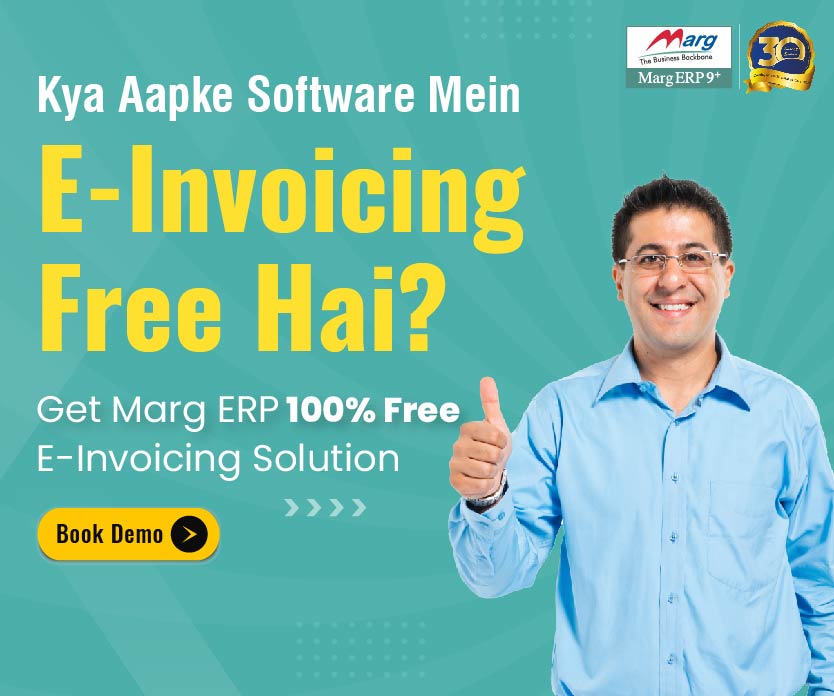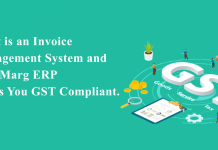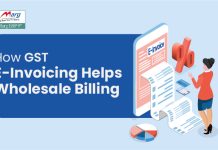Table of Contents
ToggleE-invoicing Under GST with Latest Update
The Goods and Services Tax (GST) has cut the mandatory e-invoice (electronic invoice) issuing threshold from 50 crores to 20 crores, according to the Central Board of Indirect Taxes and Customs (CBIC).
Businesses with a turnover of 20 crores or more will be obliged to issue e-invoices starting April 1, 2022. The recipient will not be able to claim ITC (Input Tax Credit) and would be liable to fines if the invoice is not authentic. Beginning in the next fiscal year, taxpayers must generate invoices on their internal systems or e-invoicing software and then report them electronically to the invoice registration portal. This is required to qualify for an input tax credit. Experts believe that this modification is geared to the government’s digital economy agenda.
Only business-to-business (B2B) transactions will be addressed by the e-invoicing system. The scope of the law excludes all financial institutions in the insurance and banking industries. Non-banking financial enterprises, goods and passenger transportation agencies, business units operating in special economic zones, and government departments are also exempt from the system.
To Whom E-invoicing is Applicable?
The first phase of e-invoicing for taxpayers with an aggregate turnover of more than Rs.500 crore commenced on October 1, 2020, according to Notification Nos. 61/2020-Central Tax and 71/2020-Central Tax. Starting January 1, 2021, e-invoicing was expanded to firms with an aggregated revenue above Rs.100 crore, as per Notification No. 88/2020.
After that, on April 1, 2021, the CBIC issued Notification No. 5/2021, requiring businesses with a turnover of more than Rs.50 crore to begin adopting e-invoicing.The CBIC issued Notification No. 1/2022, requiring businesses with a yearly turnover of between Rs.20 crore and Rs.50 crore to implement the e-invoicing system, on February 24, 2022.
E-invoicing is required if a taxpayer’s turnover exceeds a particular threshold in any fiscal year from 2017-18 through 2021-22. Furthermore, the total turnover will include all GSTINs in India under a single PAN.
For Whom E-invoicing is Not Applicable?
For the time being, as stipulated in CBIC Notification No.13/2020 – Central Tax, e-invoicing will not be applicable to the following types of registered persons, regardless of turnover:
- Insurance, a bank, or a financial institution (including a non-banking financial organization) are all examples of financial institutions (NBFC).
- A Goods Transport Agency (GTA)
- An individual who has been granted a passenger transportation license.
- A registered individual who provides services such as admission to multiplex cinematographic film screenings.
- A special economic zone (SEZ) is a tax-free zone (under CBIC Notification No. 61/2020).
- A government department and a local government (both of which are exempt under CBIC Notification No. 23/2021 – Central Tax) are two examples of government entities that are not subject to the Central Tax.
What is e-invoicing under GST?
‘e-Invoicing’ also known as ‘electronic invoicing’ is a technique by which the GSTN electronically authenticates B2B invoices before enabling them to be utilized on the common GST portal. The GST Network’s Invoice Registration Portal (IRP) will assign an identification number to each invoice submitted through the electronic invoicing system (GSTN).
The GST and e-way bill portals will receive all invoice information in real-time from this site. The requirement for manual data entry for filing GSTR-1 returns and generating Part-A of e-way bills will be eliminated because the information is transferred directly from the IRP to the GST site.
What is the Process of Generating an Electronic Invoice?
- The taxpayer must guarantee that the ERP system is in compliance with GST requirements. He could work with the software service provider to incorporate the e-invoice standard set, i.e. the e-invoice schema (standards), or at the very least have the CBIC report the mandatory parameters.
- Any taxpayer has primarily two choices for IRN generation:
- The IP address of the computer system can be whitelisted on the e-invoice site for direct API connectivity or integration via GST Suvidha Provider (GSP).
- Download the bulk generating application to upload invoices in bulk. It will produce IRNs in big batches using a JSON file that can be uploaded to the e-invoice portal.
- The taxpayer must then use that program to make a traditional invoice. He must include all pertinent information, such as the billing name and address, the GSTN of the supplier, the transaction value, the item rate, the applicable GST rate, the tax amount, and so on.
- Create an invoice in your ERP or billing software after you’ve opted for one of the aforementioned alternatives. Then, using the JSON file, an application service provider (app or GSP), or a direct API, submit the invoice details, notably the essential fields, to the IRP. The IRP will act as the central registrar for e-invoicing and authentication. You can contact IRP in a variety of methods, including SMS and mobile apps.
- IRP will look for duplication, double-check the B2B invoice’s critical elements, and generate an invoice reference number (hash) for future use. Seller GSTIN, invoice number, FY in YYYY-YY, and document type (INV/DN/CN) are the four parameters that make up an IRN.
- In Output JSON, IRP generates the invoice reference number (IRN), digitally signs the invoice, and creates a QR code for the provider. On the other hand, the supply source will be alerted of the e-invoice generation by email (if provided in the invoice).
- IRP will deliver the authenticated payload to the GST portal for GST returns. Information will be submitted to the e-way bill site if it is applicable. The seller’s GSTR-1 is automatically filled for the appropriate tax period. As a result, the amount of tax due is calculated.
How Will E-invoicing Benefit Businesses?
Businesses will get benefit from GSTN-initiated e-invoices in the following ways:
- To eliminate mismatch mistakes, e-Invoice resolves and plugs a critical gap in data reconciliation under GST.
- e-Invoices prepared with one piece of software may be read by another, enabling interoperability and lowering data entry errors.
- E-invoice allows for real-time tracking of invoices prepared by the supplier.
- Backward integration and automation of the tax return filing process – necessary invoice details would be auto-populated in various returns, particularly when creating part-A of e-way bills.
- The genuine input tax credit is becoming more readily available.
- Because the information required by the tax authorities is available at the transaction level, there is a lower likelihood of audits/surveys by the tax authorities.
Which is the Easiest Option Available for Issuing e-Invoices?
Taxpayers can continue to print their invoices with logos as they are doing today. Under the e-invoicing system, all taxpayers must enter invoices in electronic format on IRP.
If you are looking for an e-invoicing software solution, Marg ERP is the right choice. Marg ERP is providing GST services to small & medium businesses for the last 30 years. E-invoicing is integrated in Marg ERP, you will not need any other software.






